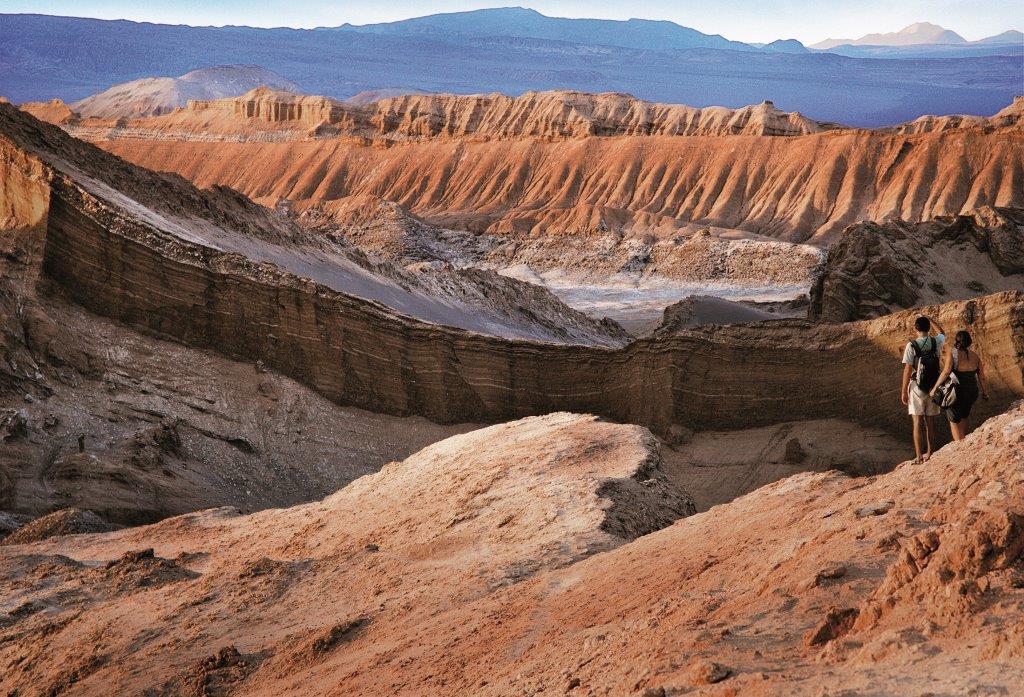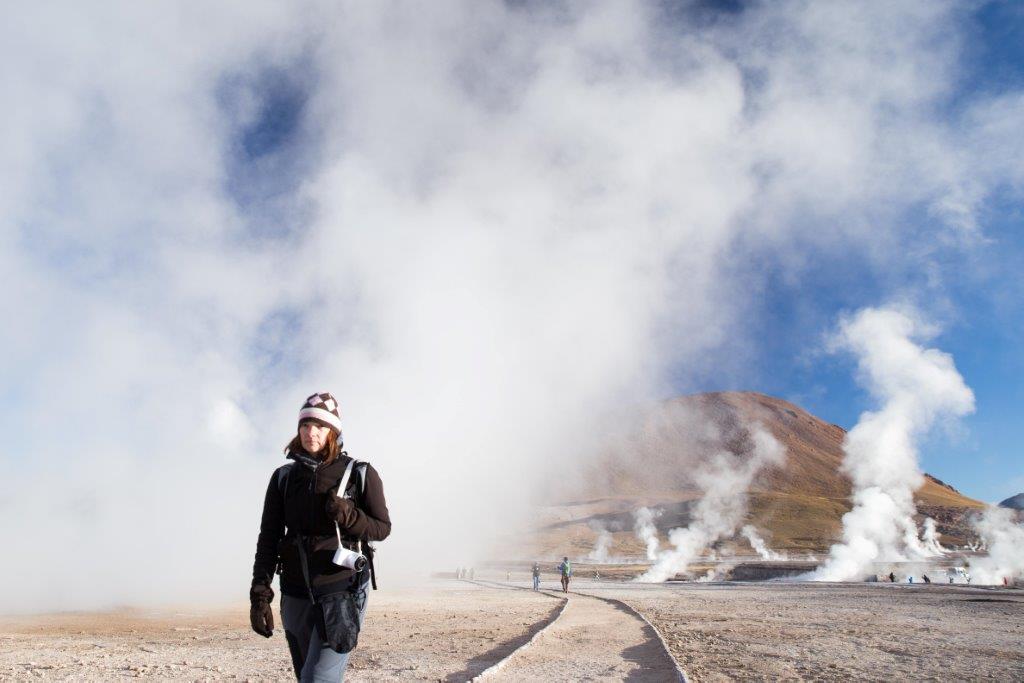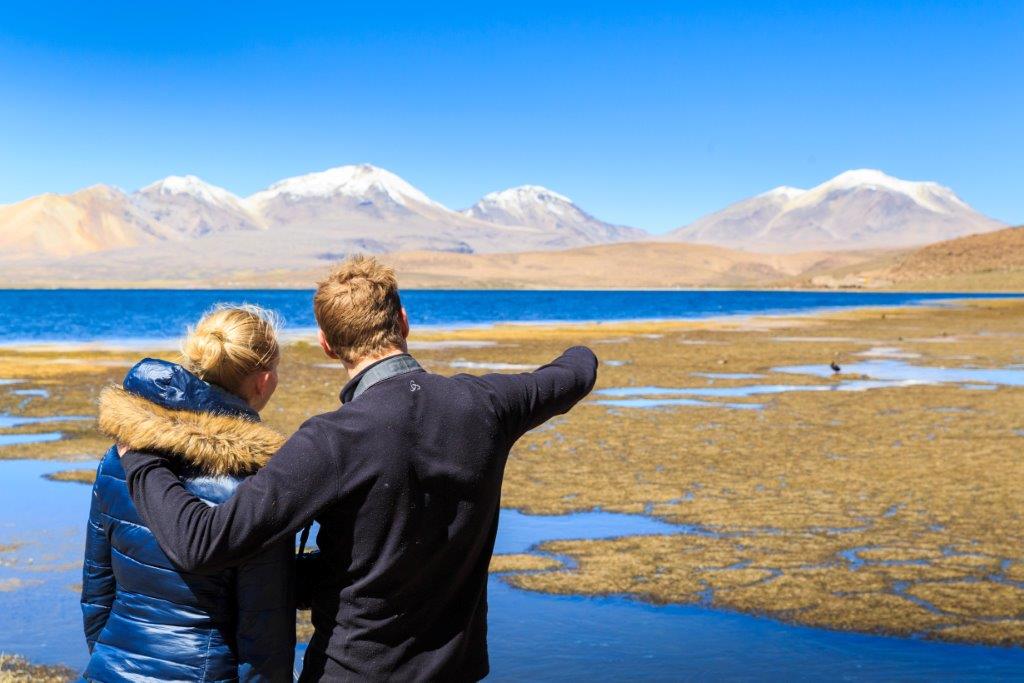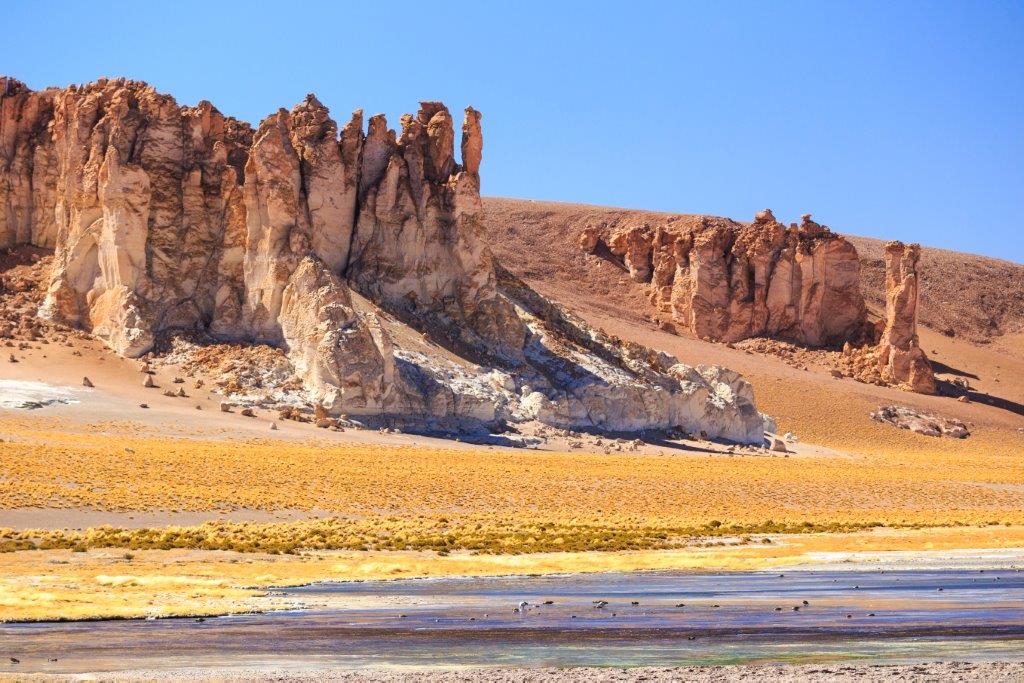San Pedro de Atacama, in the high-altitude desert of northern Chile, is like nowhere else on earth. Read on to find out how you can experience the region’s spectacular landscapes, magnificent night skies and fascinating wildlife for yourself.
The captivating natural beauty and fascinating cultures of San Pedro de Atacama are starting to make waves on the international travel scene, so visit now while it’s still pristine and untouched. From resplendent lagoons to active geysers, there’s no end to the region’s natural beauty and the adventurous at heart can survey the area from a hot air balloon or traverse the desert by bike. Whatever you do during the day, the glistening night skies will take your breath away - guaranteed.
Section Type: standardWidthImageS
San Pedro de Atacama

How to get there
Most visitors to San Pedro de Atacama fly into Calama, a 2-hour flight from Santiago. From there it’s only a 90-minute drive to San Pedro. Alternatively, combine a trip to the Uyuni salt flats in neighboring Bolivia with your San Pedro adventure.
What to see
There’s loads to do and see in the area but here are some of the biggest highlights.
See three species of flamingo at Los Flamencos National Reserve at the Chaxa Lagoon
Cycle to the Valle de la Luna (Moon Valley) or marvel at the fascinating rock formations and captivating colors of the Salt Mountains on a hike.
Go sandboarding on the monumental sand dunes in the Valle de la Muerte aka the Valley of Death.
Float effortlessly in the extremely salty waters of Laguna Cejar
Enjoy the relaxed atmosphere, religious festivities and delicious food of Chiu Chiu. It’s also home to the oldest church in Chile which was constructed in the 1600s from mud and cactus wood.
Watch the sunrise with the gorgeous El Tatio Geyser as a backdrop. These geysers are situated 4200 metres above sea level and they feature striking steam columns. Other reasons to visit El Tatio are the interesting wildlife and the relaxing hot springs.
Gaze at the endless expanse of the Atacama Salt Flats. This enormous salt lake expands over 3000 square kilometres and is nature’s answer to blue screen technology.
Visit the dazzling Altiplanic lagoons which boast sparkling blue water and glistening white shores as well as fascinating birds, wildlife and mountain backdrops.
Section Type: standardWidthImageS
At the active geysers

When to go
San Pedro is a year-round destination. What little rain does fall usually comes between December and February while the coldest months are July and August. The shoulder seasons of October and November and March - April see fewer tourists. Serious stargazers should avoid full moons and the so-called rainy season.
What to bring
Before you set off on your trip, make sure that you know what to take along with you. A good pair of hiking boots and comfortable, lightweight socks are a must-have. You’ll need shorts, t-shirts, sunscreen and a hat for those warmer days. Long-sleeve shirts, lightweight pants and jackets are essential if you are travelling to San Pedro De Atacama during the colder months. Don’t bother with a raincoat unless you’re visiting between December and February.
Section Type: standardWidthImageS
Vast lagoons

Where to stay
With a variety of incredible accommodation options, visitors to San Pedro are spoilt for choice. The Explora hotel is an eco-friendly establishment which offers you an authentic experience as well as excellent service. Awasi is a luxurious hotel with experienced guides and outstanding service. If you are looking for an affordable place to stay, head to the Altiplanico. The Tierra Atacama is conveniently located close to town with large, comfortable rooms.
Section Type: standardWidthImageS
Beautiful landscapes

Section Type: cta
Now that you know more about San Pedro de Atacama, you can start planning your trip. With its stunning landscape and fascinating attractions, San Pedro is a true hidden gem of South America. Check out our Chile itineraries or contact one of our Destination Experts to make your dream San Pedro Vacation a reality.

 South America
South America South America
South America